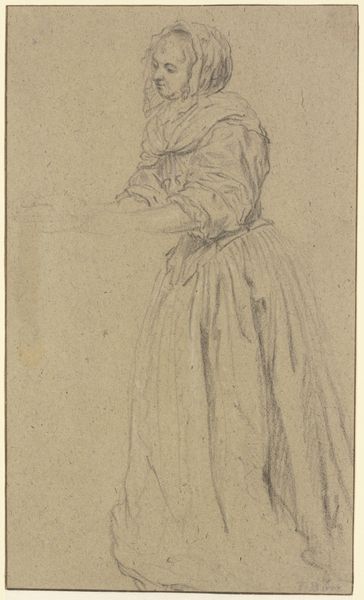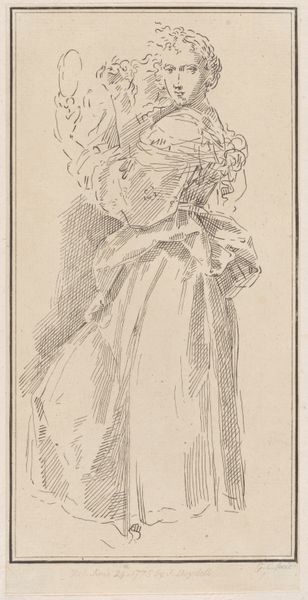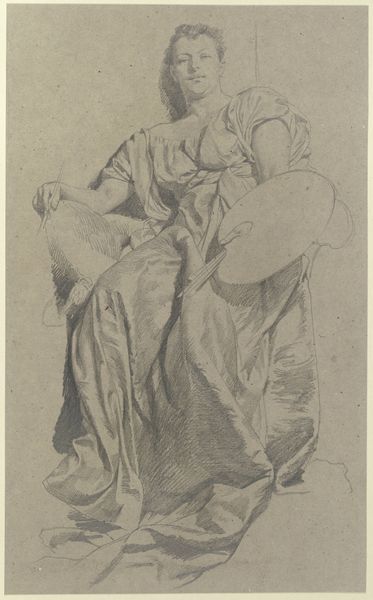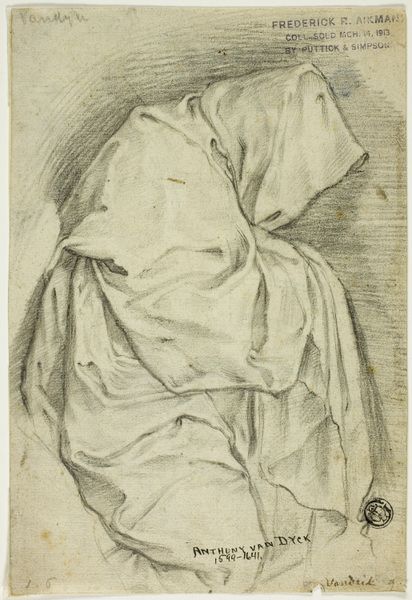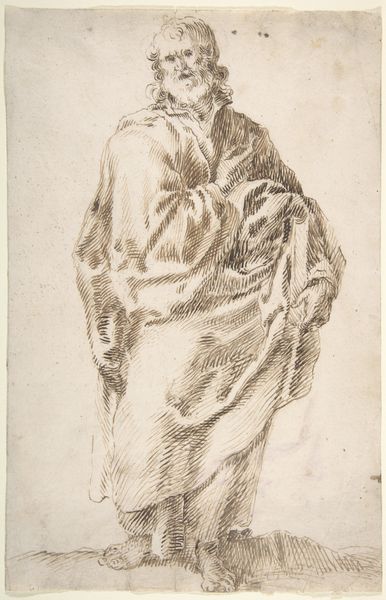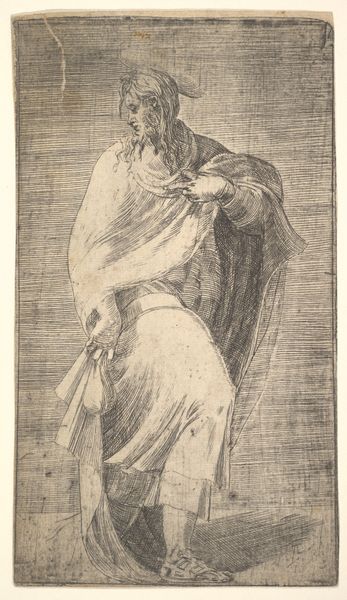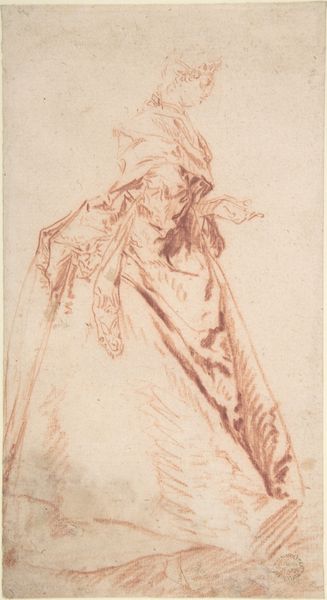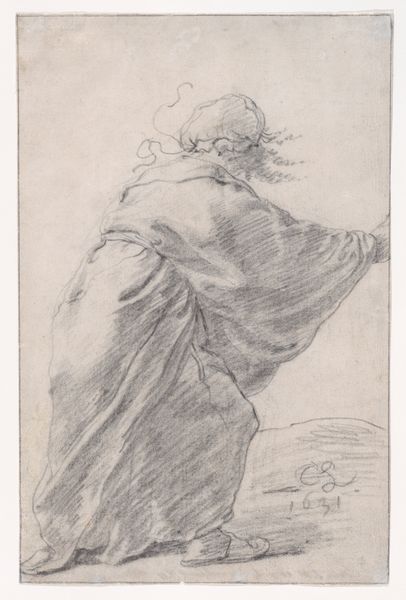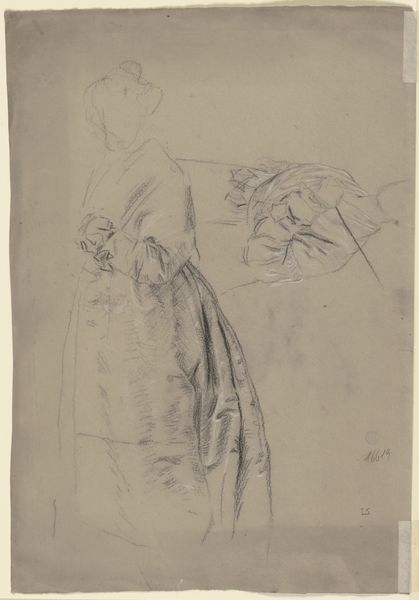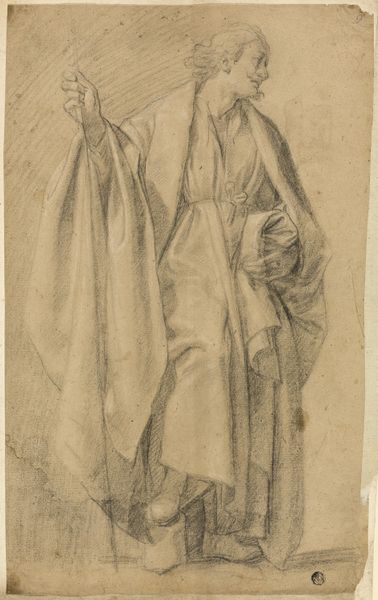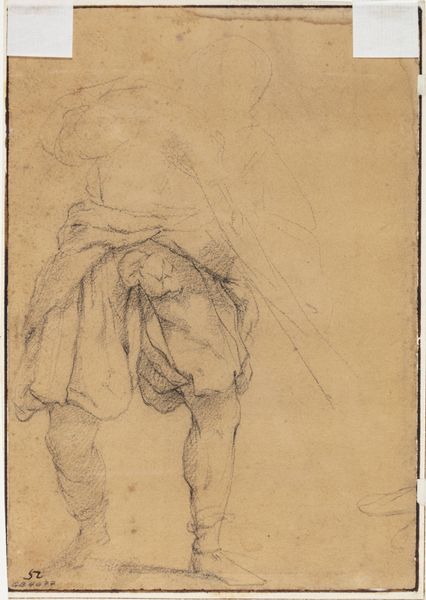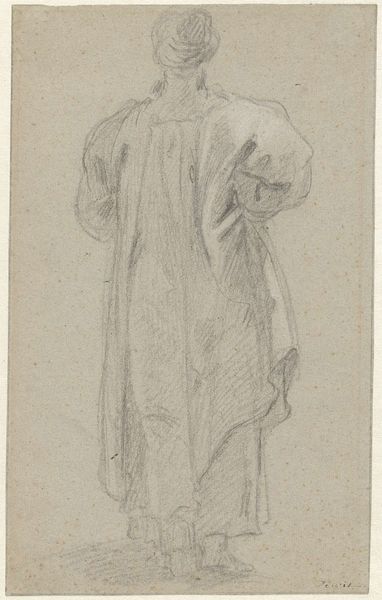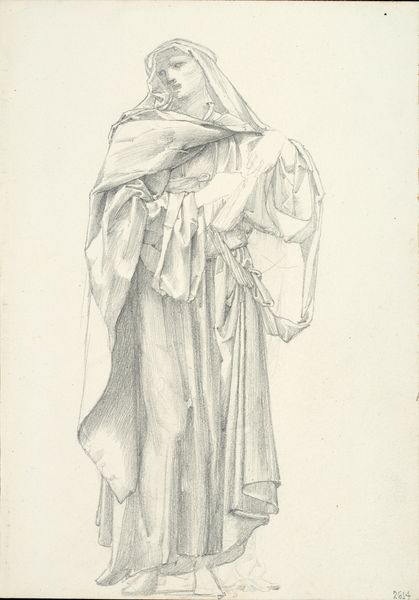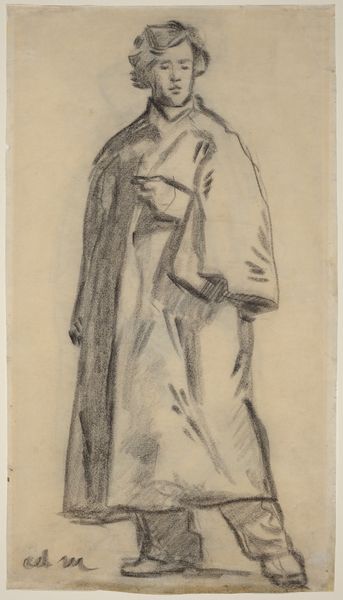
drawing, chalk
#
portrait
#
drawing
#
amateur sketch
#
toned paper
#
woman
#
light pencil work
#
baroque
#
pencil sketch
#
incomplete sketchy
#
pencil drawing
#
ink drawing experimentation
#
underpainting
#
chalk
#
flemish
#
14_17th-century
#
watercolour illustration
#
watercolor
Copyright: Public Domain
Editor: Here we have Peter Paul Rubens' "Figural Study for the Garden of Love: Hélène Fourment," a chalk drawing from around 1632. What strikes me is the intimate quality of the sketch, like a stolen moment. What do you see in this piece, particularly regarding the representation of Hélène and her role as Rubens’ wife? Curator: The drawing provides a window into the complex power dynamics of the 17th century, doesn't it? Hélène, as Rubens’ young wife, becomes both the object and subject of his artistic gaze. This wasn't merely a portrait; it was Rubens actively shaping and representing her image within a societal structure that significantly limited women's agency. Editor: That's fascinating. So, the artwork then reflects not only personal affection, but also the broader societal expectations of women at the time? Curator: Exactly. Consider how Hélène is positioned - gazing off into the distance. Is that passive acceptance or something more? The gaze itself, within feminist theory, becomes a site of struggle. Rubens is not simply drawing his wife; he is constructing a specific image for public consumption. Editor: Do you think this image then reinforced certain beauty ideals of the Baroque period and Hélène's place within that ideal? Curator: Undeniably. Rubens’ style often celebrated a voluptuous femininity, setting a standard that simultaneously celebrated and objectified women's bodies. Think of the broader impact—how did this influence other artists and the prevailing attitudes towards women’s roles in society? These depictions influenced power and perception. Editor: This has made me consider how representation plays such a critical role in perpetuating societal norms, even within something as seemingly personal as a portrait. Thanks! Curator: Precisely! And that's why engaging with art critically allows us to dissect the visual languages and systems of power operating within it, shaping our world then, and even now.
Comments
stadelmuseum about 2 years ago
⋮
Peter Paul Rubens was the most famous and sought-after painter in Europe when he married Hélène Fourment (1614-1673), the beautiful young daughter of an Antwerp merchant, in 1630, his first wife having died some years previously. The happiness his second marriage brought him began at the start of the last decade of his life. It inspired him to create the grandiose painting of the 'Garden of Love', today in the Prado in Madrid. It shows happy couples convivially assembled in an Arcadian setting, with Rubens himself leading his young wife into the circle of lovers.The chalk drawing at the Städel Museum is a study for the figure of Hélène Fourment in the 'Garden of Love'. The emphasis, however, is not on the portrait, but on the figure's harmony of balance as it steps hesitantly forward, and on the material effect of the bouffant dress. With complete assurance regarding the graphic means at his disposal, Rubens does not draw in an exploratory manner but depicts the effect of the precious fabric and its lively movement with rapid, unhindered chalk strokes, and by making virtuoso use of the free areas of paper and adding a few sections heightened in white. The head and face are outlined with a few delicate lines; light red hatching across the face introduces the shy inhibition of his beloved.This masterful drawing, perhaps the most beautiful of the studies for the 'Garden of Love' to have survived, originated in the collection of the founder of the Städelsches Kunstinstitut, who acquired it at the end of the eighteenth or beginning of the nineteenth century. This example not only shows that Johann Friedrich Städel sought to assemble works by the greatest master artists in order to form a descriptive history of art, but also that in doing so he demonstrated a precise eye for what was exceptional and of high quality.
Join the conversation
Join millions of artists and users on Artera today and experience the ultimate creative platform.
